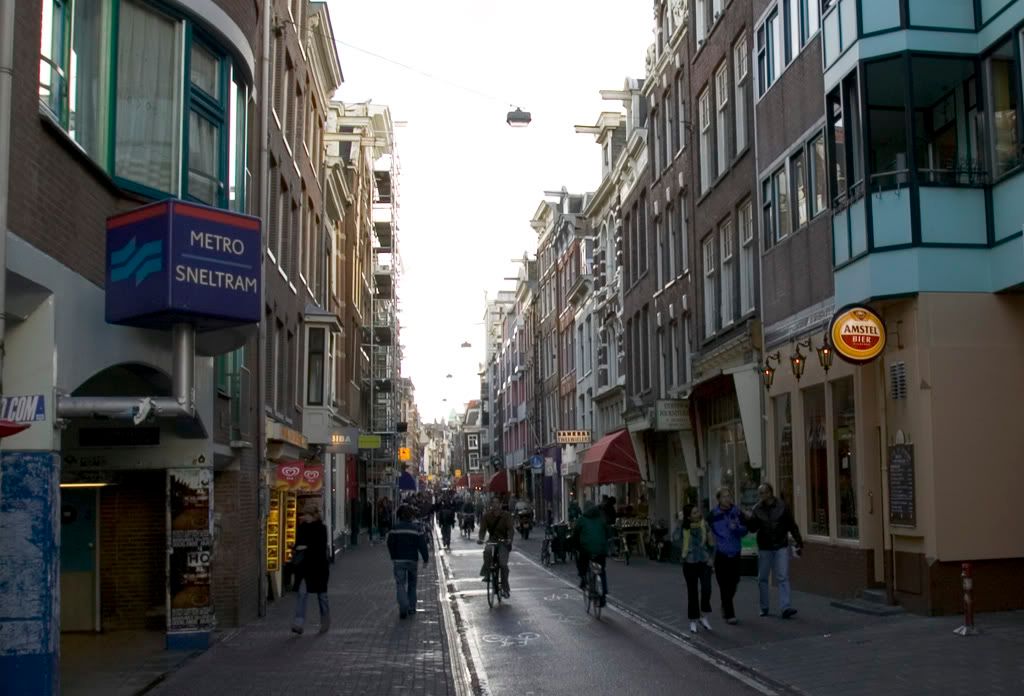Amsterdam means a lot of different things to a lot of different people, but to me it is the city of Rembrandt van Rijn. More on that, but first the modern city.


Jun 27 2009
Amsterdam means a lot of different things to a lot of different people, but to me it is the city of Rembrandt van Rijn. More on that, but first the modern city.

Jul 08 2008
Want to be free of cars? Neal Peirce writes:
Bikes, overall, account for 37 percent of Amsterdam transport. Public transit comes in second, at 22 percent of trips. On top of regular and high-speed rail, there’s a massive light-rail network — 50 miles of tramlines, with many stops, dense in the center city, radiating out to neighborhoods and suburbs with cross-connecting lines too. Recently, freight tramcars began running through the city, cutting truck use (and pollution). And Amsterdam has added three new subway lines since its first in 1976.
So what’s the Amsterdam game plan? For decades it’s been to nurture the “compact city,” slowing a middle-class exodus and preserving the open landscape by dense development, recycling old industrial areas and intermingling uses. Reducing auto use — now just 41 percent of trips compared to 90 percent-plus in most U.S. cities — is the heart of the plan.
Helped along by the Netherlands’ high gas taxes (per gallon costs are now over $9), the Amsterdam approach not only cuts energy use but provides a starting point for dramatic carbon reduction. But its genius, so rarely discussed in America, is smart land use and curbing the auto use that so easily overwhelms modern world cities.
Cities in the Netherlands like Amsterdam have been busy changing and evolving away from a car transportation system since Jimmy Carter was elected in the United States in 1976. American cities, on the other hand, largely have been pushing for more roads, wider roads, and more cars.
Resulting in, as the International Herald Tribune describes, America’s oil addiction: Chronicle of a crisis foretold.
Over the last 25 years, opportunities to head off the current crisis were ignored, missed or deliberately blocked, according to analysts, politicians and veterans of the oil and automobile industries. What’s more, for all the surprise at just how high oil prices have climbed, and fears for the future, this is one crisis we were warned about. Ever since the oil shortages of the 1970s, one report after another has cautioned against America’s oil addiction.
Even as politicians heatedly debate opening new regions to drilling, corralling energy speculators, or starting an Apollo-like effort to find renewable energy supplies, analysts say the real source of the problem is closer to home. In fact, it’s parked in our driveways.
Nearly 70 percent of the 21 million barrels of oil the United States consumes every day goes for transportation, with the bulk of that burned by individual drivers, according to the National Commission on Energy Policy, a bipartisan research group that advises Congress.
People in the Netherlands are paying twice as much — $9 a gallon — for gasoline… and have something to show for it. What does America have to show for $4.50 a gallon gasoline?